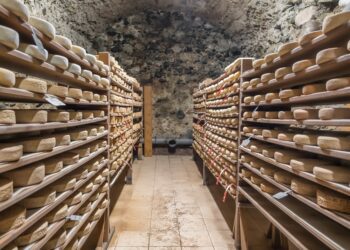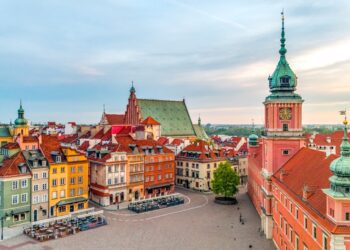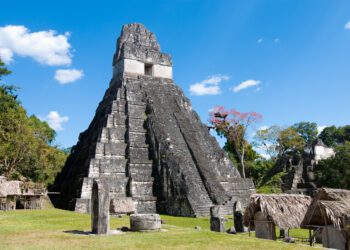Ireland. A land synonymous with ancient mysteries, where monumental stones stand silent testament to a forgotten past. But few places hold more profound secrets than Brú na Bóinne, a UNESCO World Heritage Complex in County Meath that houses some of the most extraordinary structures of the prehistoric world.
Newgrange: a Stone Age cathedral?
Nestled by the sacred River Boyne, an ancient highway for Ireland’s earliest inhabitants, Brú na Bóinne holds some of the most magnificent and densely located rock art in the prehistoric world.
While archaeologists have identified 150 monuments in the valley – with 40 still visible today – it’s the world-famous passage tombs of Newgrange, Knowth, and Dowth that dominate, dating back to the Neolithic period (the last era of the Stone Age) around 4,000 BC. This was a pivotal time when farming transformed societies, and the fertile Boyne Valley became an ideal home for Ireland’s earliest farmers.
Passage tombs were stone burial chambers, accessed by long passages, and covered with large mounds of earth and stone cairns. They have been found across Europe, but at Brú na Bóinne one stands apart: Newgrange. So significant is its scale and sophistication that some archaeologists consider it the Stone Age equivalent of a cathedral, built on the highest point of a ridge, clearly intended to be seen by all who travelled the Boyne.
A discovery older than some pyramids
Newgrange was uncovered by accident in 1699 by local landowner Charles Campbell, whose workers unwittingly uncovered its entrance during a building project. People soon ventured to Newgrange to examine the site, and later, organic building material found within the tomb dated it to 3,200 BC, making Newgrange older than Stonehenge (3,000BC) and the Great Pyramid of Giza (c2,600 BC).
A masterpiece of engineering and belief
Originally built more than 5,000 years ago, the true grandeur of Newgrange was restored through a meticulous archaeological restoration in the 1960s and 70s, led by Professor Michael O’Kelly. His team’s work offers the closest glimpse we have into Newgrange’s original appearance over 5 millennia ago.
Standing 11 metres high, 85 metres across, and covering an acre, the restored mound is a testament to extraordinary ancient engineering. At least 450 slabs of stone form the inner tomb, weighing over 200,000 tonnes, encircled by 97 massive kerbstones and a stunning facade of white quartz.
A masterpiece of engineering and belief
Originally built more than 5,000 years ago, the true grandeur of Newgrange was restored through a meticulous archaeological restoration in the 1960s and 70s, led by Professor Michael O’Kelly. His team’s work offers the closest glimpse we have into Newgrange’s original appearance over 5 millennia ago.
Standing 11 metres high, 85 metres across, and covering an acre, the restored mound is a testament to extraordinary ancient engineering. At least 450 slabs of stone form the inner tomb, weighing over 200,000 tonnes, encircled by 97 massive kerbstones and a stunning facade of white quartz.
The Winter Solstice alignment
Perhaps the most breathtaking secret of Newgrange lies in its deliberate astronomical alignment. As Dr. Muiris O’Sullivan, a Newgrange expert and archaeologist from University College Dublin, explains to Tristan, the monument is “famously aligned onto the midwinter rising sun.” The axis of this alignment runs precisely from the front stone to the back stone.
Above the entrance, an opening known as the ‘roofbox’ allows a clever phenomenon to occur. On the shortest day of the year (21 December) and a few days before and after, the rising sun sends a direct beam of light through this roofbox. For 17 minutes, the ancient chamber is bathed in the golden glow of the winter sun. This precision engineering points to a profound ritualistic or spiritual purpose, the exact nature of which remains unknown.
This tomb, created by highly skilled individuals and used repeatedly throughout the Neolithic period, served as a sacred space for the elite. As Dr. O’Sullivan notes, “Presumably the people buried in there were the elite of some form. We know that there were male and female, and various age groups…seeming to suggest family rather than individual prestige”.












